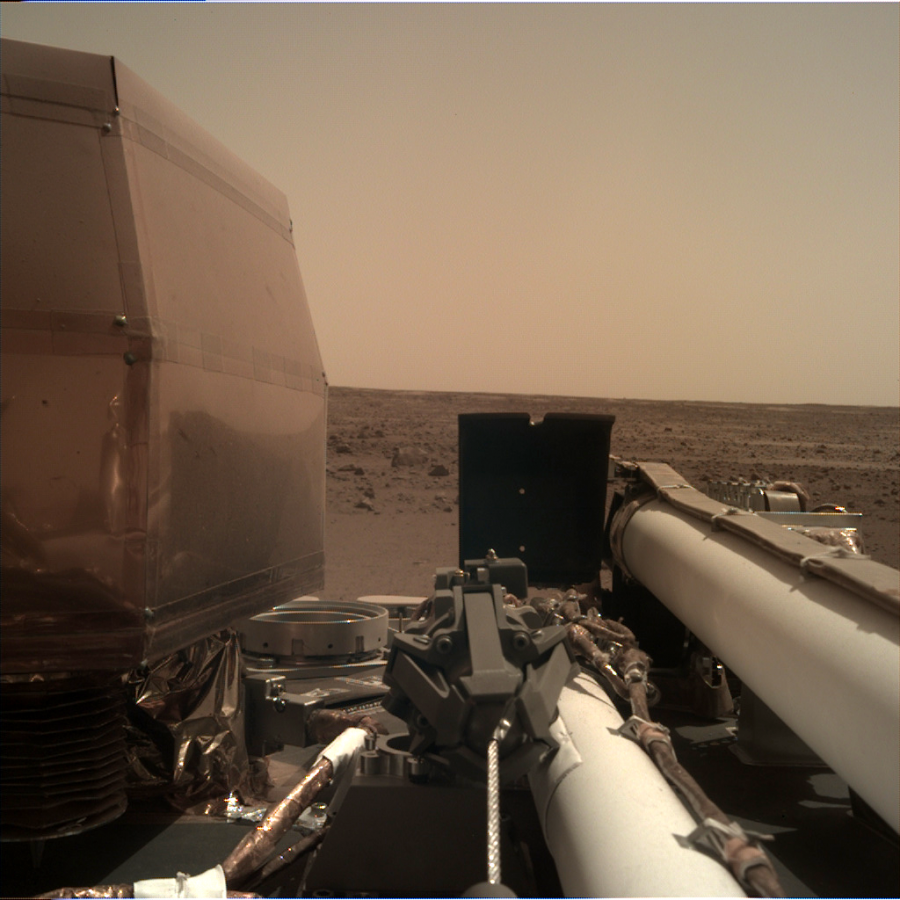Making moves on Mars
The National Aeronautics and Space Administration (NASA) spacecraft InSight finished its six month, 300 million mile journey with a successful landing on the red planet, Mars last Monday, Nov. 26. This marks the eighth successful landing of a NASA spacecraft on Mars and the first landing for NASA administrator Jim Bridenstine.
According to NASA, the Lockheed Martin Space control center in Denver had about 30 engineers and other employees working together non-stop to safely land the craft.
The extensive journey across space was the easy part for engineers at the control center. The most difficult part comes in the seven minutes before landing. These seven minutes are known as E.D.L., or entry, descent, landing. These few minutes are very intense, as even the smallest mistake could ruin the over $800 million mission.
InSight entered Mars’ sub-zero atmosphere going 12,300 miles per hour, using a parachute to bring it to a safe landing on the vast plain known as Elysium Planitia near Mars’ equator.
“The atmosphere of Mars is 1 percent that of our own, and mostly carbon dioxide,” said Dr. Steffan Puwal, a visiting professor in the OU Department of Physics.
Now that InSight has comfortably landed on Martian surface for its two-year stay, it can begin working on discovering things that no other craft has done before.
InSight stands for Interior Exploration Using Seismic Investigations, Geodesy and Heat Transport. According to NASA, the craft is equipped with cutting-edge instruments to measure the planet’s vital signs: seismology, heat flow and precision tracking.
“They have a seismometer and will also drill into the surface to measure the temperature below the soil,” said Dr. David Garfinkle, a professor in the Oakland University Department of Physics. “They want to know whether there is seismic activity, what is the rate of heat flow, and whether the core of the planet is solid or liquid.”
Scientists know a lot about the surface and atmosphere of mars, but near nothing about what is under the surface. This will be the first mission that studies the interior of mars in order to map out the deep structure of the planet.
“Mars is somewhat similar to the Earth, but it has no plate tectonics and instead has a gigantic volcano, and a much weaker magnetic field,” Garfinkle said. “That suggests that its interior works somewhat differently from that of the Earth.”
NASA states that the two main missions of InSight are to learn how the rocky planet of Mars came to form in space and to better understand the tectonic activity that occurs. This includes investigating things like the temperature of the inside and the composition of the core, mantle and crust.
“The announcement by NASA that water in liquid form was found beneath the surface suggests it is possible for Martian bacteria or similarly simple organisms to exist,” Puwal said in regard to the possibility of martian life. “If we find evidence that life existed on Mars, or if it still does, I think it will be the most significant and humbling discovery in human history.”
The information that will be gathered from InSight will give scientists a more in-depth analysis of how other celestial bodies were formed, considering all we know about is Earth.
You can follow InSight’s martian adventures and stay up to date on new discoveries on its Twitter account @NASAInSight.







